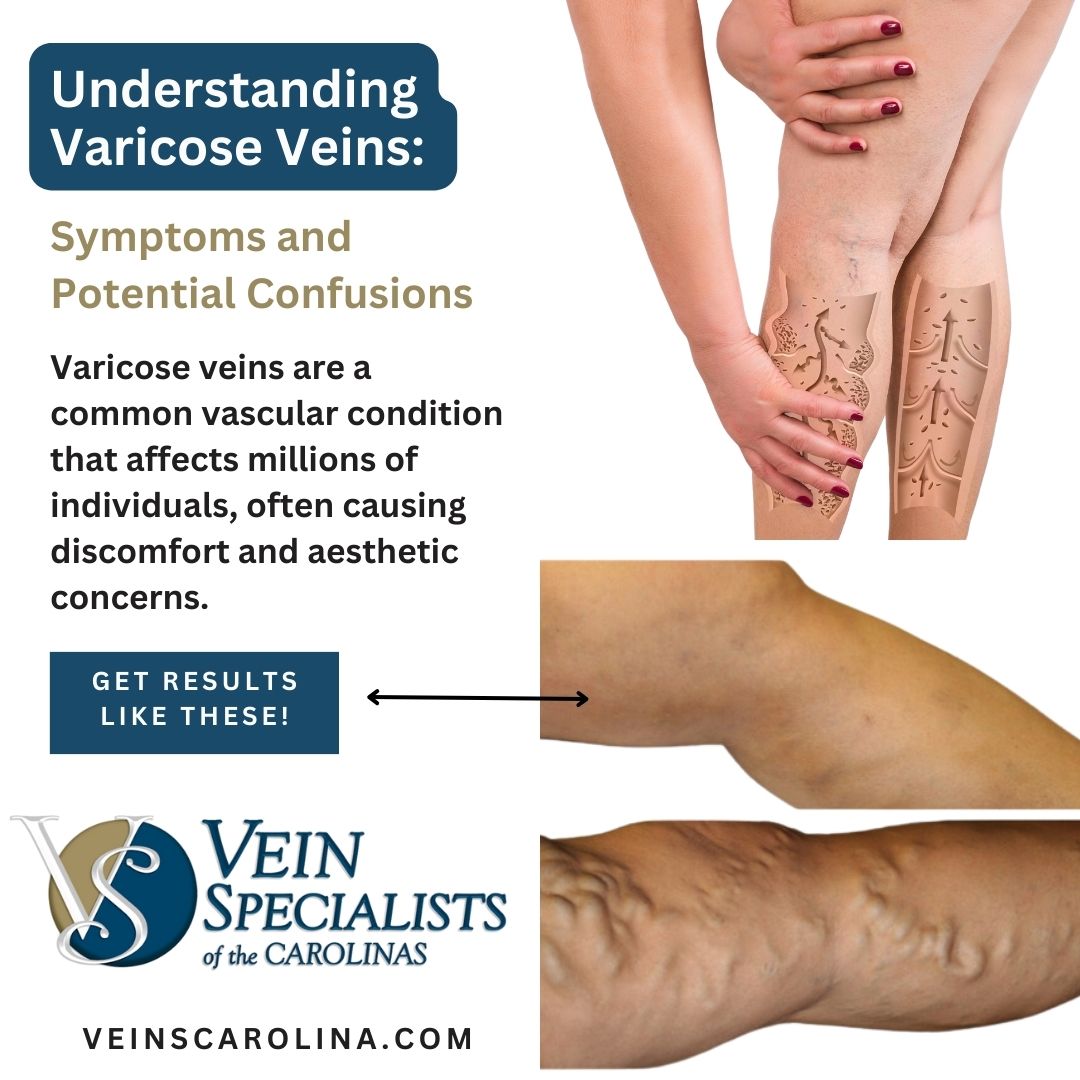Varicose veins are a common vascular condition that affects millions of individuals, often causing discomfort and aesthetic concerns.
As a Vein Specialist of the Carolinas, it is crucial to shed light on the symptoms of varicose veins and the potential confusion they may pose with other conditions. Recognizing these signs early on can lead to timely intervention and effective management.
Symptoms of Varicose Veins:
- Visible Veins: One of the most apparent signs of varicose veins is the appearance of twisted, bulging veins just beneath the surface of the skin. These veins are often blue or dark purple and are commonly found on the legs.
- Pain and Discomfort: Individuals with varicose veins may experience pain or aching sensations in the affected areas. This discomfort can intensify after prolonged periods of standing or sitting.
- Swelling: Swelling, particularly at the ankles and lower legs, is a common symptom of varicose veins. This occurs due to the impaired blood circulation in the affected veins.
- Itching and Burning Sensations: Varicose veins can cause the skin around the affected area to become dry, itchy, or have a burning sensation. Scratching should be avoided, as it can exacerbate the symptoms.
- Skin Changes: Over time, varicose veins can lead to changes in the skin, such as discoloration or the development of ulcers. These changes occur due to the prolonged accumulation of blood in the affected veins.
Confusion with Other Conditions:
- Deep Vein Thrombosis (DVT): DVT is a condition where blood clots form in the deep veins of the body. While both DVT and varicose veins involve vein-related issues, DVT is a more serious condition that requires immediate medical attention. Distinguishing between the two is crucial, as DVT can lead to life-threatening complications if left untreated.
- Peripheral Arterial Disease (PAD): PAD is a condition characterized by the narrowing of arteries, often leading to reduced blood flow to the limbs. Though different from varicose veins, PAD can cause similar symptoms, such as leg pain and swelling. A comprehensive evaluation is essential for an accurate diagnosis.
- Venous Insufficiency: This condition occurs when veins have difficulty returning blood from the legs to the heart. While varicose veins are a form of venous insufficiency, not all cases of venous insufficiency result in visible varicose veins. It is crucial to consider a thorough examination to identify the underlying cause.
- Muscle Strains or Injury: Pain and discomfort associated with varicose veins may be mistakenly attributed to muscle strains or injury. A careful evaluation, including imaging studies, can help differentiate between these conditions.
Understanding the symptoms of varicose veins and the potential confusion with other vascular conditions is essential for accurate diagnosis and effective management.
If you suspect you may have varicose veins or are experiencing similar symptoms, seeking consultation with a Vein Specialist is advised to determine the appropriate course of action – schedule an appointment today!
“All We Do Is Veins, All Day Every Day.”
#VeinHealth #VascularHealth #VaricoseVeins #LegHealth #VeinSpecialist #HealthyLiving

